RESOURCES ON
EUROPEAN JEWISH LIFE
Jewish Life in Eastern Europe Before and During World War II
Spring 2021, Five-Week Mini-Course with Professor Samuel Kassow
Class 1 – Vilna (Part 1)
Class 4 – Warsaw (Part 2)
Class 2 – Vilna (Part 2)
Class 5 – Lodz
Class 3 – Warsaw (Part 1)
Course Information
Course schedule and description document.
Virtual Festival of Yiddish Culture
Summer 2020
The Yiddish Song Today
Yiddish Theater
Yiddish Glory
Bad Rabbi
Jewish Hartford Gallery
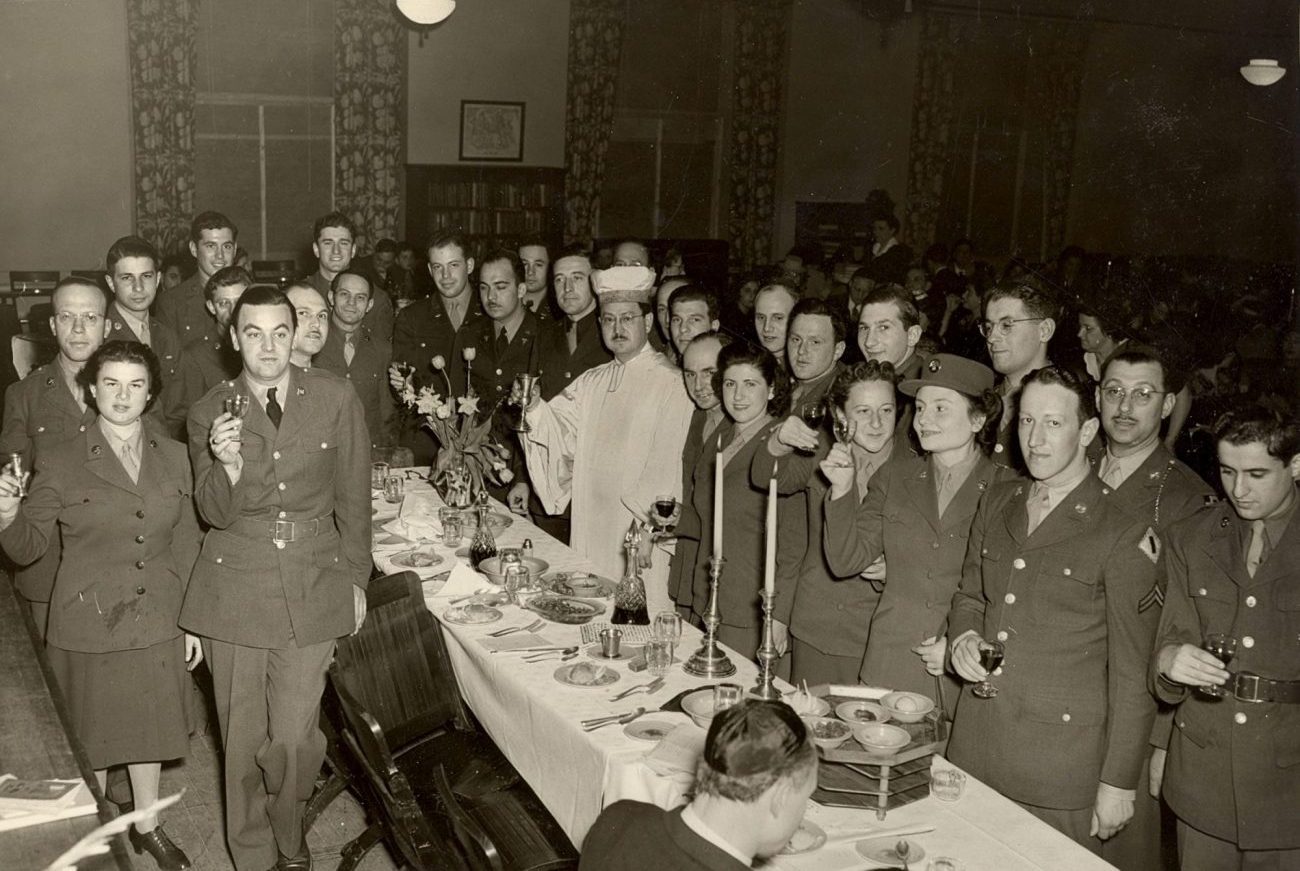 USO WWII Passover Seder Emanuel Synagogue. Photo contributed by the Jewish Historical Society of Greater Hartford.
USO WWII Passover Seder Emanuel Synagogue. Photo contributed by the Jewish Historical Society of Greater Hartford.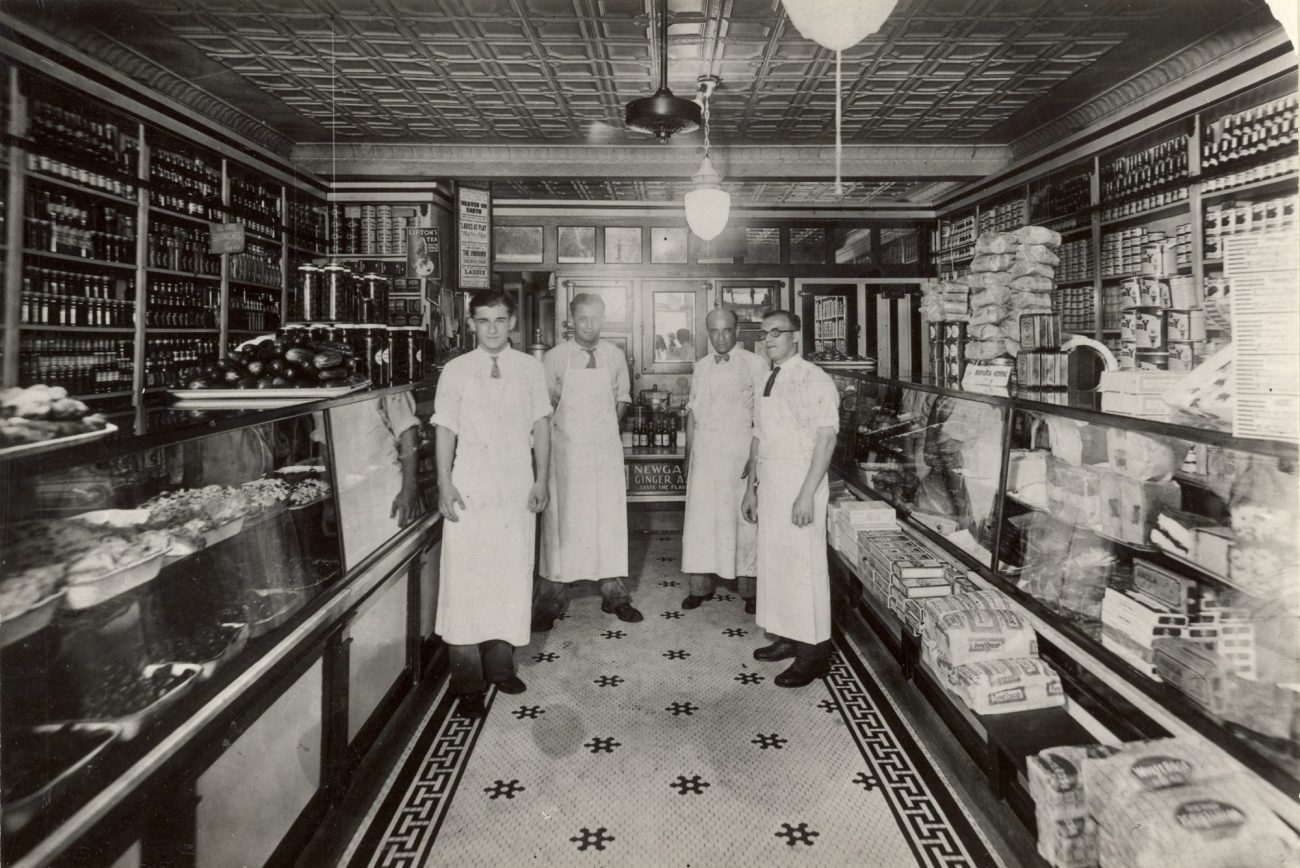 Platt's Delicattessen Albany Ave circa 1940. Photo contributed by the Jewish Historical Society of Greater Hartford.
Platt's Delicattessen Albany Ave circa 1940. Photo contributed by the Jewish Historical Society of Greater Hartford.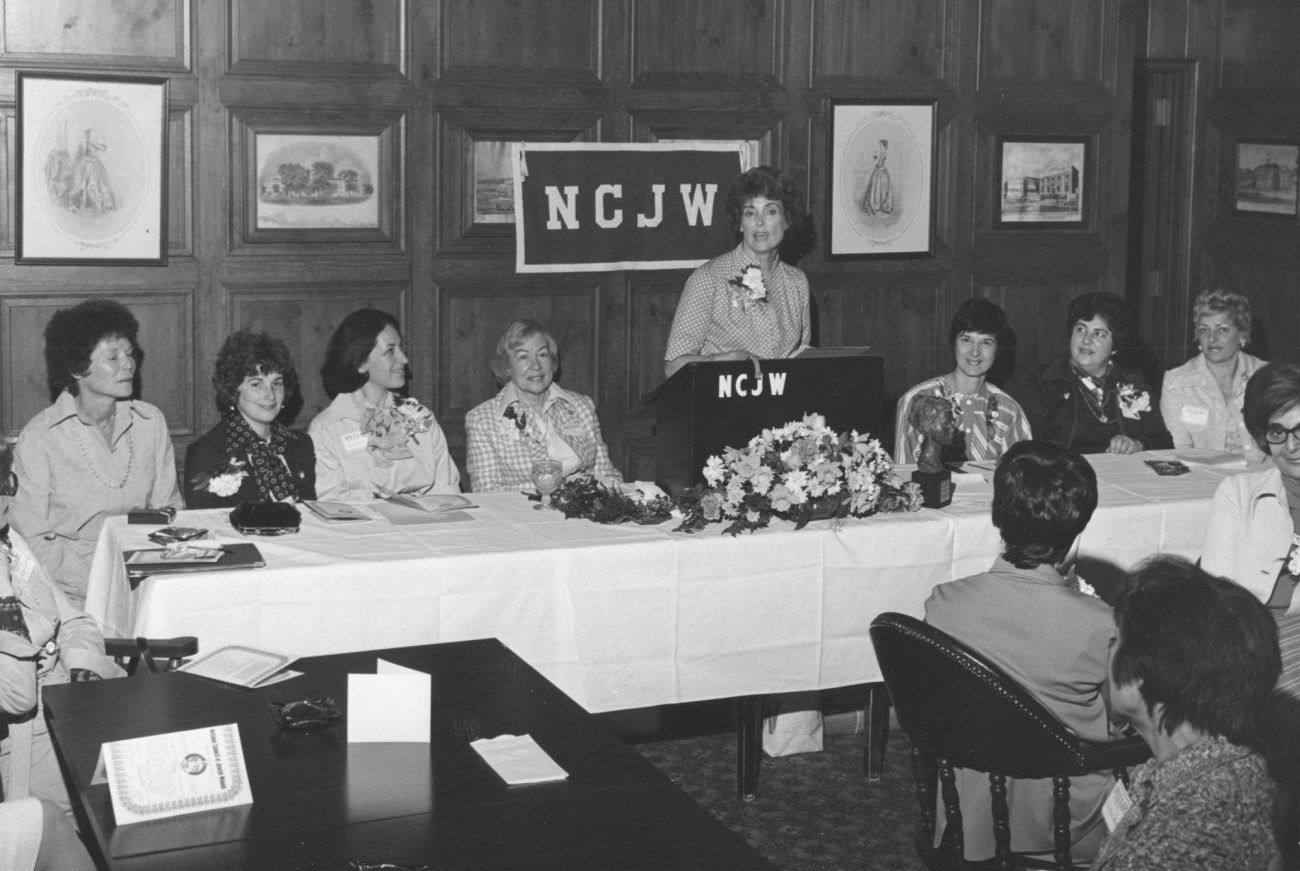 NCJW. Photo contributed by the Jewish Historical Society of Greater Hartford.
NCJW. Photo contributed by the Jewish Historical Society of Greater Hartford. Maxwell Drug Co. Photo contributed by the Jewish Historical Society of Greater Hartford.
Maxwell Drug Co. Photo contributed by the Jewish Historical Society of Greater Hartford.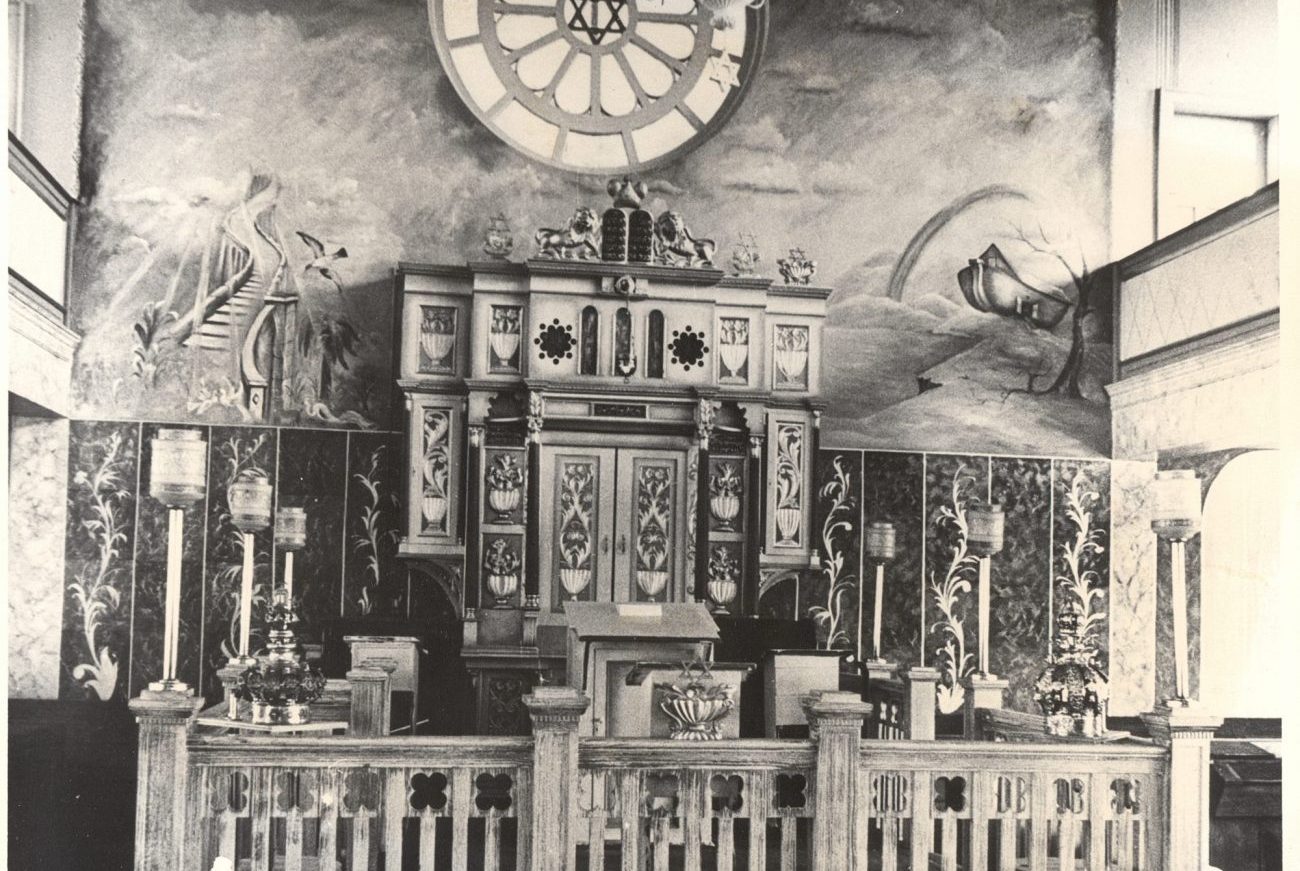 Garden St. Synagogue (Beth Hamedrash Hagodol)_Rabbi Isaac Avigdor, 1973. Photo contributed by the Jewish Historical Society of Greater Hartford.
Garden St. Synagogue (Beth Hamedrash Hagodol)_Rabbi Isaac Avigdor, 1973. Photo contributed by the Jewish Historical Society of Greater Hartford. Emanuel Bar Mitzvah Club, 1929. Photo contributed by the Jewish Historical Society of Greater Hartford.
Emanuel Bar Mitzvah Club, 1929. Photo contributed by the Jewish Historical Society of Greater Hartford.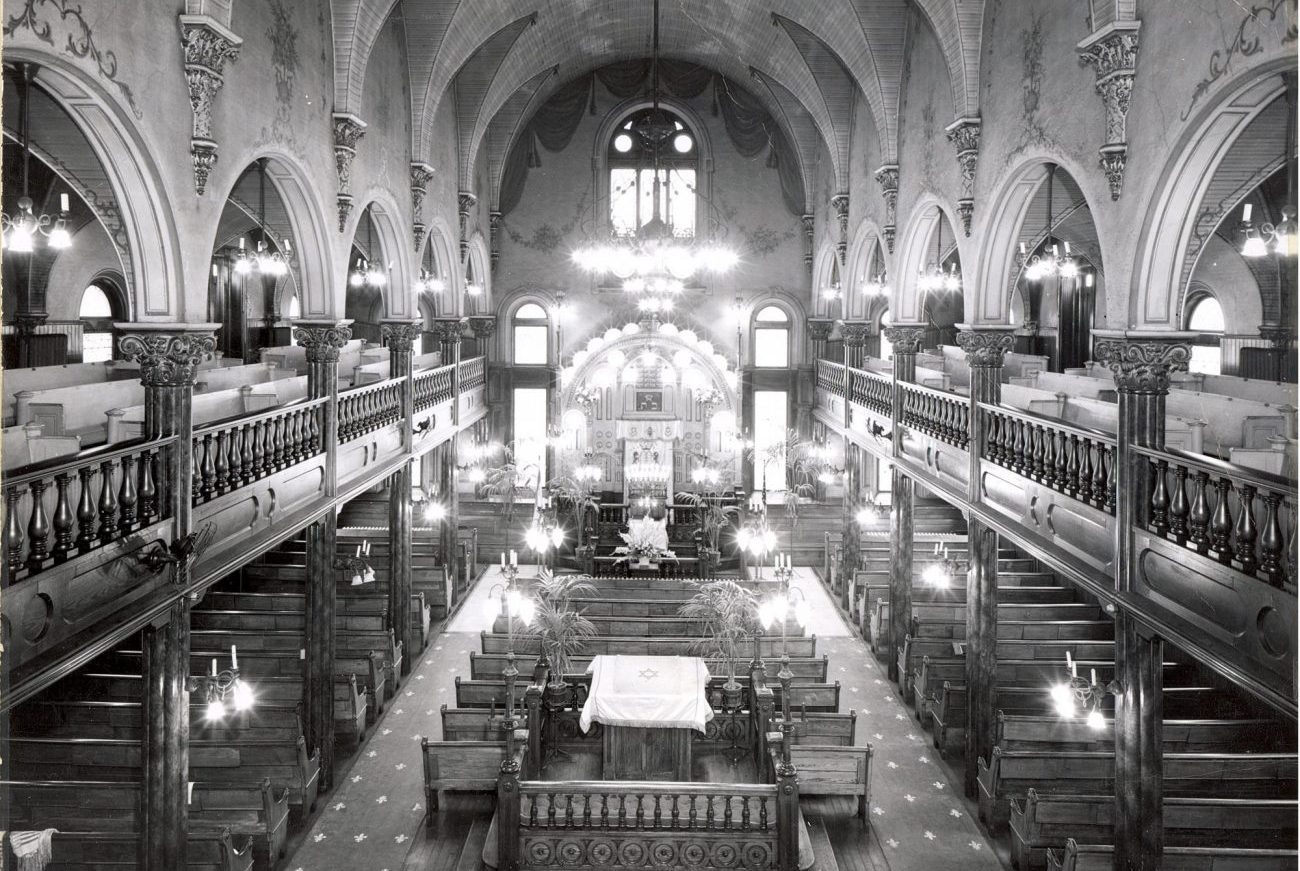 Ados Israel Interior Market St Hartford. Photo contributed by the Jewish Historical Society of Greater Hartford.
Ados Israel Interior Market St Hartford. Photo contributed by the Jewish Historical Society of Greater Hartford.
Projections of Life: Jewish Life Before WWII
Useful Links & Interactive Tools
Historic Synagogues of Europe Interactive Map
Holocaust Education & Archive Research Team
Jewish Historical Society of Greater Hartford
Jewish Partisan Educational Foundation
Jewish Virtual Library - The Holocaust
Littman E-Library of Jewish Civilization
Additional Readings
For Teachers and Classrooms:
1. A Convenient Hatred: The History of Antisemitism by Phyllis Goldstein. Facing History and Ourselves and Ourselves, 2011. Traces origins and evolution of antisemitism from 6th c. BCE to present, raising questions of both individuals and society distinguishing between "us" and "them."
*2. The Anguish of the Jews: Twenty-Three Centuries of Antisemitism by Edward H. Flannery, forward by Philip A. Cunningham, second edition, 2004. A classic history of antisemitism written by a Roman Catholic priest exposes the reality of historical antisemitism in the United States and around the world. The second edition includes material covering the last two decades considering developments in the Middle East and exploring the impact of Judaic studies have had on Christian thought.
3. The Last Album: Eyes from the Ashes of Auschwitz-Birkenau by Ann Weiss. W.W. Norton and Company, 2001. Family photographs discovered in Auschwitz archives which had been taken from Jewish prisoners upon arrival. Weiss has traced many of the people and places in the pictures and includes these stories.
4. Life is with People: The Culture of the Shtetl by Mark Zborowski and Elizabeth Herzog. Schocken Books, 1962. A rich source on Eastern European Jewish culture, based upon first-hand observation.
5. There Once Was a World: A 900-Year Chronicle of the Shtetl of Eishyshok by Yaffa Eliach. Little, Brown and Company, 1998. Survivor and historian Yaffa Eliach tells the life of her home in a Lithuanian shtetl through history, testimonies and photographs. Her collection of 1,500 photographs of Eishyshok lines the Tower of Faces at the U.S. Holocaust Memorial Museum.
6. Together and Apart in Brzezany: Poles, Jews, and Ukrainians, 1919-1945 by Shimon Redlich. Drawing on the historical record, his own childhood memories, and interviews with Poles, Jews, and Ukrainians who lived in the small eastern Polish town of Brezezany to construct this account of the changing relationships of the town’s three ethnic groups before, during, and after World War II.
7. Erased, Vanishing Traces of Jewish Galicia in Present-Day Ukraine by Omer Bartov. Eminent Holocaust scholar Omer Bartov explores the life of Jews in the Ukraine and his mother’s hometown. His quest was to discover the manner in which Jews lived as opposed to how they died. Along the way he learns more about his family, himself, and attempts to collectively deny this history.
8. Jews Poland and Russia, A Short History by Antony Polonsky 2013. Authoritative resource of Jewish history and life in Eastern Europe. ‘Exemplary and formidable [Professor] Polonsky, as much as anyone else, has created the field of modern Jewish history as a subject to be considered and understood rather than simply a tragic past to be mourned. He is too good a historian to confuse the history of Jewish life with the German policies that brought Jewish death…The barely visible commitment in these three wonderful volumes is to rescue a world from polemic, for the sake of history.’ Timothy Snyder, Wall Street Journal.
For Students:
*1. The Best of Sholom Aleichem edited by Irving Howe and Ruth R. Wisse. New Republic Books, 1979 (or any of the famous humorist and author Sholom Aleichem’s [1859-1916] stories).
*2. Devil in Vienna by Doris Orgel. Puffin, 1988. Historical novel set in Vienna during months leading up to the Nazi annexation of Austria in March 1938. Based on the author’s experience, a 13-year-old girl recounts the difficulties of maintaining a friendship with the daughter of a Nazi.
*3. Friedrich by Hans Peter Richter. Puffin, 1987. This modern classic, based on the childhood experiences of the author, relates the tragic story of a Jewish boy during the 1930s, told through the perspective of his friend.
*4. Ten Thousand Children: True Stories Told by Children Who Escaped the Holocaust on the Kindertransport by Anne L. Fox and Eva Abraham-Podietz. Behrman House, 1998. Accounts of 21 people who were among the 10,000 children rescued by Great Britain between December 1938 and September 1939.
Other Media:
*1. Camera of My Family. Catherine Hanf Noren left Nazi Germany with her Jewish parents after her birth in 1938. As an adult she traces her roots through old family photos and discovers the fate of family members unable to leave Germany. Color and black and white; 20 minutes.
*2. Echoes That Remain: Story of the Jews of the Shtetl. Life in a pre-World War II Eastern European shtetl is recreated through photos and original footage. Narrated by Martin Landau. Black and white; 1 hour.
3. European Antisemitism from Its Origins to the Holocaust (USHMM). 13-minute film from Museum’s Permanent Exhibition, incorporating early visual representations of connections and conflicts between Christians and Jews. Includes transcript, suggested questions and links. Available online through https://www.ushmm.org.
*4. Image Before My Eyes – A History of Jewish Life in Poland Before the Holocaust. Award-winning film from YIVO Institute for Jewish Research depicts broad diversity of life in the largest center of pre-war Jewish culture and creativity. Black and white; 1 hour, 30 minutes.
*5. Jews of Poland: The Five Cities. Travelogue of five major Polish cities filmed on the eve of the war. Short segments show broad diversity of Jewish life in Krakow, Bialystok, Lvov, Vilna, and Warsaw in the 1930s. Black and white; full film 50 minutes.
*6. A Yiddish World Remembered. Archival film, photographs and music combine with interviews of those who lived through the pre-war years. Color and black and white; 80 minutes.
*Denotes resources that may be considered for 7th and 8th Grade.